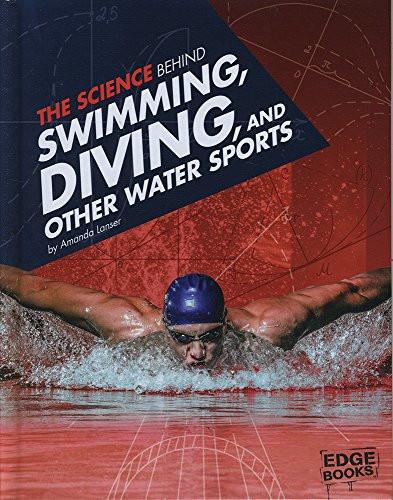Peak Zenit's Key Ideas from Science Behind Swimming, Diving, and Other Water Sports
by Amanda Lanser
Ideas, facts & insights covering these topics:
6 ideas
·475 reads
3
Explore the World's Best Ideas
Join today and uncover 100+ curated journeys from 50+ topics. Unlock access to our mobile app with extensive features.
Title: The Physics of Perfect Diving
Mastering the perfect dive involves understanding physics. Angular momentum and body positioning dictate a diver's rotation and entry into the water. This precise alignment minimizes splash and maximizes scoring potential, crucial for competitive diving success.
7
96 reads
Why Swimmers Shave Their Bodies
Competitive swimmers shave to minimize water resistance. Even the smallest amount of body hair can increase friction, slowing swimmers down. Studies detailed in "Science Behind Swimming" show how a smooth surface enhances speed by reducing the drag force exerted by the water.
7
85 reads
The Chemistry of Chlorinated Pools
Chlorine in swimming pools does more than keep the water clear; it neutralizes harmful bacteria that can pose health risks. The book discusses how chlorine's reactive properties transform it into an effective disinfectant, ensuring a safe environment for swimmers.
7
81 reads
Buoyancy and Body Types: A Swimmer's Guide
Buoyancy is influenced by body density—fattier tissues are less dense than muscle and bone, making some athletes more naturally buoyant. "Science Behind Swimming" explores how swimmers can leverage their natural buoyancy to improve their efficiency in the water.
7
73 reads
The Impact of Water Temperature on Performance
Water temperature significantly affects swimmers’ performance. Warmer waters can over-relax muscles, reducing effectiveness, while colder waters may lead to muscle tightening and decreased reaction times. Optimal temperatures help maintain muscle performance and prevent injuries.
7
68 reads
Breathing Techniques for Enhanced Swimming
fficient breathing is critical in swimming. Proper techniques help maintain a steady supply of oxygen to muscles and regulate buoyancy. "Science Behind Swimming" describes how rhythmic breathing aligns with stroke movements to maximize air intake and conserve energy.
6
72 reads
IDEAS CURATED BY
I believe that the vastness of the internet holds content that can aid each of you on your path to self-improvement. My hope is to curate and deliver this content to you, supporting your journey towards becoming a better version of yourself!
CURATOR'S NOTE
I thoroughly enjoyed writing this post because I recently started swimming at my local indoor pool. To my surprise, I broke quite a sweat while having fun! It took me 20 years to realize how much I love this activity, but better late than never!
“
Discover Key Ideas from Books on Similar Topics
12 ideas
Body Mind Mastery
Dan Millman
19 ideas
The Importance of Positive Relationships in the Workplace
positivepsychology.com
10 ideas
Can't Hurt Me
David Goggins
Read & Learn
20x Faster
without
deepstash
with
deepstash
with
deepstash
Personalized microlearning
—
100+ Learning Journeys
—
Access to 200,000+ ideas
—
Access to the mobile app
—
Unlimited idea saving
—
—
Unlimited history
—
—
Unlimited listening to ideas
—
—
Downloading & offline access
—
—
Supercharge your mind with one idea per day
Enter your email and spend 1 minute every day to learn something new.
I agree to receive email updates






